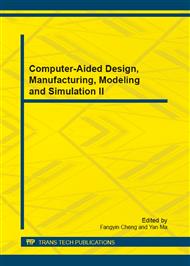p.1246
p.1251
p.1255
p.1263
p.1268
p.1273
p.1278
p.1283
p.1289
Effect of Design Parameters on the Reduction of Top Piston Ring Friction
Abstract:
In order to reduce ring-liner interface friction power loss, this paper focuses on the structure parameters of the top ring, and investigates how the value of those parameters will influence top ring-liner friction power loss and the minimum thickness of oil film at top ring-liner interface. A mixed lubrication model is developed to simulate the effect of varying design parameters on ring-liner friction. Case study shows that ring-liner friction power loss will be reduced with decreased axial ring height and barrel height. This study provides a theoretical basis for design the top ring with reduced friction power loss at ring-liner interface.
Info:
Periodical:
Pages:
1268-1272
Citation:
Online since:
December 2012
Authors:
Keywords:
Price:
Сopyright:
© 2013 Trans Tech Publications Ltd. All Rights Reserved
Share:
Citation:


